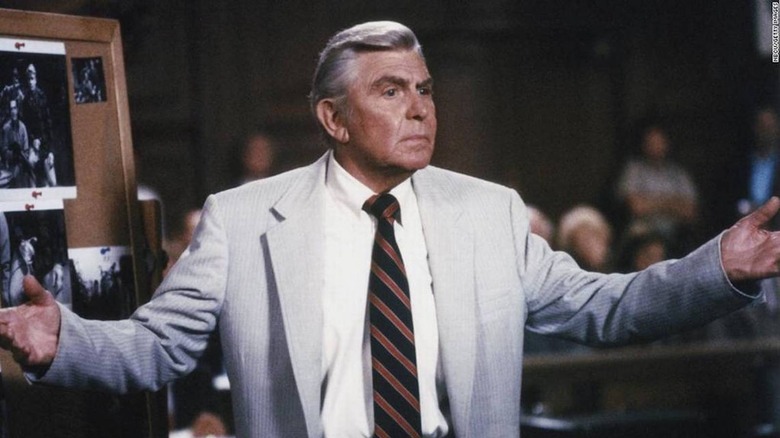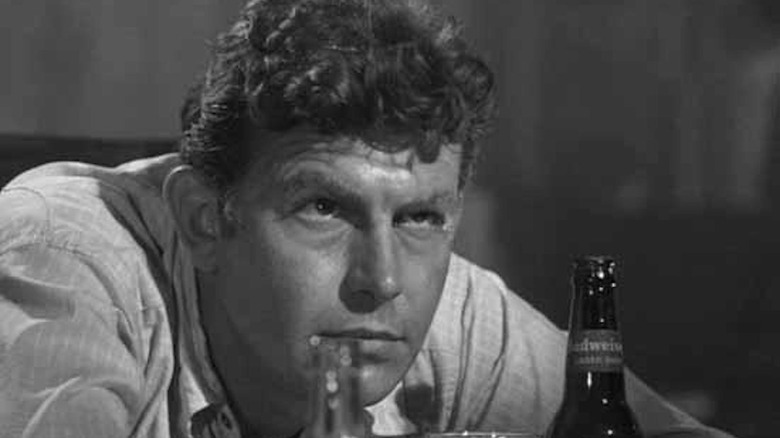Andy Griffith Had Dark Ideas For Matlock That Led To Arguments Behind The Scenes
Elderly television viewers in the 1980s and '90s had an amazing Hollywood ally in Dean Hargrove.
The small-screen veteran got his start in the 1960s as a writer for "My Three Sons" and "The Bob Newhart Show" (the unsuccessful precursor to the wildly successful 1970s sitcom of the same name), and received credit for some of the best episodes of "The Man from U.N.C.L.E." He wrote on arguably the greatest mystery series to ever air on network TV (we're not arguing if you read that passage and immediately thought "Columbo"), and kept Dennis Weaver employed as a producer on "McCloud."
But his most lasting impact on the medium was his 1985 – 2002 run as the producer of such old-people-go-a-sleuthin' shows as the "Perry Mason" television movies, "Jake and the Fatman," "The Father Dowling Mysteries," "Diagnosis: Murder" and the grandpappy of them all, "Matlock."
Hargrove's genius was turning America's favorite TV dads into unassuming seekers of justice. He was doing a kindness to Greatest Generation couch potatoes who needed something to watch after they chased their early-bird dinner at Bill Knapp's with the bubbly dessert known as "The Lawrence Welk Show." These survivors of the Great Depression demanded a low-impact, boob-tube nightcap, and there was no better way to drift off to sleep in the living room they hadn't redecorated since Nixon choppered out of the White House on Marine One than a formulaic whodunnit presided over by the former sheriff of Mayberry.
"Matlock" was good, late-career work for Andy Griffith. There was just one problem: he had integrity. He was fine doing the television equivalent of dinner theater, but he wasn't keen on sleepwalking. He wanted his Atlantan lawyer to be more than Raymond Burr's Perry Mason with a Southern drawl. He wanted Ben Matlock to have a dark side. Alas, Hargrove wasn't having this.
The unexamined monster inside Matlock
According to Daniel de Visé's "Andy and Don: The Making of a Friendship and a Classic American Television Show," Griffith, whose finest hour in front of a camera is inarguably his portrayal of folksy firebrand Lonesome Rhodes in Elia Kazan's scathing media satire "A Face in the Crowd," wanted Matlock to have a dark side. Perhaps he could have an issue with the booze. Maybe he had a violent temper that landed him in jail from time to time. What if he sold Amway?
Griffith lobbied Hargrove to sharpen Matlock's edges, but the producer knew his audience. The last thing he needed was octogenarians launching their dentures into their bowl of Breyers vanilla ice cream because the guy who gamely put up with Aunt Bee's nonsense for the better part of a decade drunkenly clotheslined guest star Barbara Billingsley.
Aside from the time Matlock helped Don "Brother of Patrick" Swayze beat a murder rap (an episode that, no joke, was sold in commercials via the question "Will he Sway-ze jury?"), Griffith's character was only a morally upright barrister with an atrocious fashion sense. He reliably got my grandparents to 10 p.m., at which point they were hopefully too tired to worry that they might not wake up in the morning.

